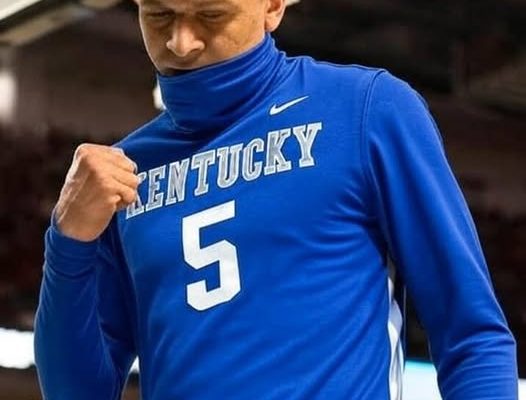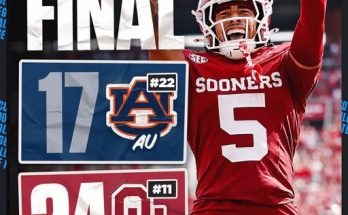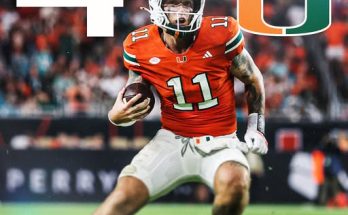3 Questions for Duke Blue Basketball Player After Making a Shocking Decision to Play for Kentucky Basketball Team
In one of the most unexpected turns of the college basketball offseason, former Duke Blue Devils standout and rising star guard Jaylen Harrington has made the shocking decision to transfer to the University of Kentucky. The move has sent tremors through the college hoops landscape, igniting passionate debates, fan uproar, and a sea of speculation.
Harrington, a high-profile recruit out of high school and a key part of Duke’s rotation last season, was seen by many as a future centerpiece of the Blue Devils’ program. His athleticism, court vision, and increasingly confident scoring made him a fan favorite in Durham and a player Duke was heavily counting on heading into the upcoming season. But in a move that stunned fans, teammates, and even insiders within the program, Harrington entered the transfer portal in mid-July — and within a week, committed to Kentucky.
What makes the situation even more surprising isn’t just the transfer itself, but the destination. Historically, Duke and Kentucky are two of college basketball’s most powerful, proud, and competitive blue-blood programs. Their fan bases don’t mix. Their legacies often stand on opposite sides of the college basketball rivalry spectrum. For a player to transfer from Duke to Kentucky? That’s not just rare — it’s almost unheard of.
In the wake of this monumental decision, there are more questions than answers. We’ve narrowed it down to the three biggest ones that everyone is asking Jaylen Harrington right now — and why they matter not only to Duke and Kentucky, but to the future of college basketball.
Perhaps the most obvious and urgent question: Why did Jaylen Harrington choose Kentucky?
By all accounts, Harrington was in good standing at Duke. He was on track to be a major contributor — if not a starter — this coming season. He had the trust of head coach Jon Scheyer, strong relationships with teammates, and a system that was increasingly being tailored to his skill set. Duke’s backcourt was expected to be one of the best in the country, and Harrington was a big part of that projection.
But clearly, something shifted.
Sources close to the situation suggest that Harrington had been quietly exploring his options as early as June. While no public drama or dissatisfaction ever surfaced, there were signs of subtle tension. A crowded backcourt, new incoming talent, and perhaps uncertainty about his exact role may have sparked questions in Harrington’s mind. But transferring to a rival like Kentucky? That suggested more than just a desire for minutes — it suggested a search for something bigger.
In a short social media post announcing his decision, Harrington said: “This isn’t about rivalry. This is about fit. Kentucky is the right place for my next chapter.” It was a simple, carefully worded message, but it didn’t satisfy the curiosity of fans, who wanted to know what exactly “fit” meant.
Was it about coaching style? Was it about a clearer path to a lead guard role? Was it about NIL opportunities that Kentucky was more equipped to provide? Or was there something at Duke — behind the scenes — that pushed him away?
John Calipari’s departure from Kentucky left many wondering if the Wildcats’ recruiting power would wane. But new head coach Mark Pope has come in with a modern, player-friendly approach that prioritizes open offense, freedom of movement, and building strong individual brands within a team-first structure. It’s very possible Harrington saw something in Pope’s vision that aligned better with his own ambitions.
Still, the move raises questions about loyalty, relationships, and expectations at elite programs. The answer to why may never be fully revealed, but it’s the biggest mystery of the offseason.
Scheyer, entering his third full season as Duke’s head coach, has done an impressive job transitioning the program into a new era. He’s landed elite recruits, developed young players, and kept Duke near the top of the national conversation. But Harrington’s departure — especially to Kentucky — is a blow. Not just because of his talent, but because of what it may signal.
Under Mike Krzyzewski, Duke rarely lost players of Harrington’s caliber. Especially not to direct rivals. The program had a gravity to it — a stickiness. Once you were in, you stayed. But the current landscape is different. The transfer portal and NIL era have changed the game, and even top-tier programs aren’t immune.
That said, Harrington’s decision raises deeper questions about internal competition and role clarity at Duke. Was he concerned about sharing minutes with incoming freshman phenoms? Did he feel his development had plateaued? Or was there a disconnect between what he was promised during recruitment and what he experienced?
Scheyer has emphasized a “work-first” culture at Duke — one built on grit, sacrifice, and team-first mentality. That’s admirable, and it’s working in many ways. But in a world where players have more agency than ever, programs must also be hyper-attuned to individual growth, opportunity, and communication. Losing a star player to another blue-blood suggests there may be cracks that need examining — even in a fortress like Duke.
Fans are now asking: Could this happen again? Are other players quietly questioning their roles? Is the NIL landscape creating a new kind of power imbalance where fit can be bought — or at least influenced?
In fairness to Scheyer, one transfer does not signal doom. But it does remind us that maintaining program culture in 2025 is more complex than ever before.
Make no mistake: transferring to Kentucky from Duke comes with weight.
Harrington didn’t just change teams. He changed tribes. He’s stepping into a fan base that will cheer him with unmatched passion — but also scrutinize his every move. Kentucky fans expect titles. They expect leadership. They expect immediate impact. And they know where he came from. Every bad shooting night, every turnover, every comment about his time at Duke will be dissected.
On the flip side, Kentucky also offers opportunity. Coach Pope runs a system that could allow Harrington to flourish. He’ll likely be handed the keys to the offense — something that may not have been guaranteed in Durham. He’ll have spacing, shooters around him, and freedom to attack. If he performs, the NBA will take notice.
But the pressure is real. Can Harrington rise to it? Is he prepared to lead a new locker room, earn the respect of teammates, and shoulder expectations?
There’s also the narrative factor. The media will follow this story all season. If Duke and Kentucky meet in the NCAA Tournament — or even during non-conference play — the storyline writes itself. Harrington will be the center of that storm. Can he tune out the noise and deliver?
Sources say he’s fully committed. He’s already moved to Lexington and begun team workouts. Early reports from Kentucky’s practices suggest he’s adjusting quickly, and that Pope is designing offensive sets specifically to highlight his strengths. But the real test will come when the lights are bright, the crowds are loud, and the stakes are high.
For now, Harrington has made his choice. It’s bold. It’s controversial. And it’s a risk.
But if he succeeds — if he becomes the star many believe he can be — it could redefine how we view player movement between elite programs. And it could set a precedent no one saw coming.
So we’re left with three lingering questions: Why did he go? What does it mean for Duke? And can he rise to the challenge?
The answers may not come all at once. But one thing is certain: the college basketball world will be watching — closely.



